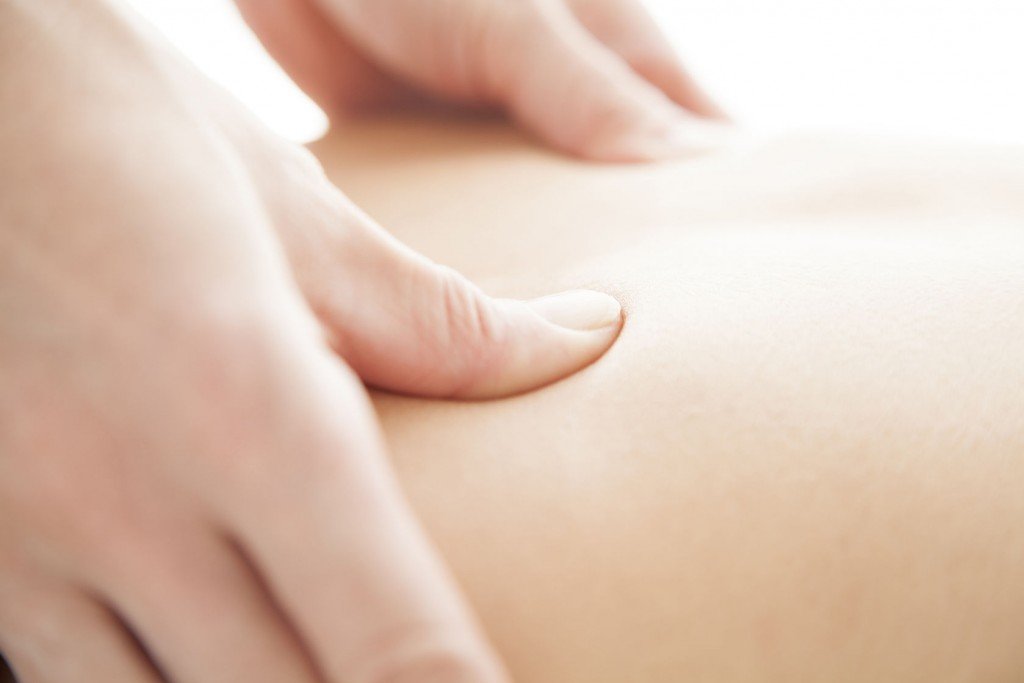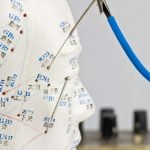Cheryl Kasdorf, ND
A 17-year-old female had “spasms up and down [her] back every 30 seconds, which were painful and exhausting.” After a visit to the ER and a spinal tap to check for meningitis, they gave her pain meds and muscle relaxers and sent her home. Nothing changed.
The next day, during the first Bowenwork move of our session, everything relaxed. She felt “pops, as it seems that bones moved into place.” After the session she was “relaxed but sore for the next day.” The spasms did not come back.
What just happened? Are the results repeatable?
Bowenwork is an example of the best of naturopathic medicine. And yes, I see results like this time after time, as witnessed in my practice.
Bowenwork acknowledges the vis medicatrix naturae, the Healing Power of Nature, using gentle rolling moves over muscles, tendons and fascia to facilitate and augment this inherent self-healing process. Sometimes called the “homeopathy of bodywork,” Bowenwork is unusual in that the moves are performed in specific locations on the body, followed by pauses of several minutes between sets of moves to allow the body to integrate the effects of the work. In addition to reduction of pain, increased mobility and a general sense of well-being, it is common for patients to sleep more soundly and then have increased energy levels.
A specific set of Bowenwork moves are done on both sides of the spine, directly affecting autonomic nervous system ganglia to reset the stress patterns and turn off the fight-or-flight response. When this happens, muscle tension decreases, nerve hypersensitivity is reduced, and the feedback loops that control acute pain in the body are interrupted. At the same time, the parasympathetic system is reciprocally restored, increasing blood and lymph flow, feeding starved tissue and reducing inflammation.
While there is often immediate reduction of pain and spasm, results are just as likely to unfold over a longer period of a few days to a week. Bowenwork can relieve and restore within 3-4 sessions, with an ordinary treatment protocol often involving between 3 to 8 sessions. There is also a specific set of exercises that Tom Bowen came up with to help continue the releases once the patient leaves the office.
Unraveling the Mystery Through Physiology
Let’s look at a few Physiological Laws for a deeper understanding of how the body responds to Bowenwork…
Arndt-Schultz Law: Weak stimuli activate physiological processes, while very strong stimuli inhibit physiological responses.
Bowenwork uses gentle, slow moves, which are perceived by the body as a weak stimulus, activating healing. We are “flying under the radar” of the body so as not to provoke a defensive response. In contrast, deeper work such as Trigger Point and deep tissue massage can give off strong impulses that can turn off other processes in the body. This explains why the slow gentle Bowenwork technique is so effective.
Hilton’s Law: A nerve trunk that supplies a joint also supplies the muscles of the joint and the skin over the attachments of those muscles.
Bowenwork moves work superficially on the body, with a small amount of pressure. By stimulating the superficial structures, all of the structures supplied by that nerve trunk are affected, releasing deeper tissues such as muscles and joints.
In an injury, it may be difficult to determine if the pain is coming from the skin, muscle or joint. Pain from any tissue may in turn affect the other tissues. And treatment by stimulation of any and all tissues affects all other tissues. That is why moves with light pressure over the skin, or a gentle slow move stretching a muscle can affect the joint.
Reciprocal inhibition: When one set of muscles is in chronic contraction, the antagonists will be inhibited (weakened) and lengthened.
The classic Bowenwork move will very gently stretch the muscle sideways and then very gently let it go. This stimulates proprioceptors, such as spindle cells and Golgi tendon bodies, resulting in changes in the resting length of muscle fibers by way of spinal reflexes and the central nervous system. So it doesn’t just relax the muscle; it will reset the tension in not only in the muscle we are releasing but will also cause an excitation response in its opposing muscle. Tight muscles are loosened and opposing loose muscles are tightened up. It is a true re-balancing of muscle tension.
All or None Law: If a stimulus is any strength above threshold, the nerve or muscle fiber will either give a complete response or no response at all. Therefore, the strength by which a nerve or muscle fiber responds to a stimulus is not dependent on the strength of the stimulus.
Less is best. By using only enough stimulation with a Bowenwork move to take the nerve or muscle fiber to just above its threshold, the response is initiated and that is all that is necessary. This means there is no need to continue to work an area, eliminating additional irritation and inflammation.
Law of Conservation of Energy: Energy is constant; it is neither created nor destroyed but only transformed from one form or another.
When a traumatic event such as a fall occurs, the energy of the force of the fall is absorbed by the body. This energy must be released from the body or transformed for healing to occur. After a set of Bowenwork moves, the patient is left to process at least 2 minutes before any other work is done. During this time, energy can dissipate freely or be transformed.
What’s Behind the Name?
These techniques developed by Tom Bowen are now becoming one of the most powerful healing modalities in the world. Ossie and Elaine Rentsch were fortunate to have studied with Tom Bowen and were responsible for creating a format in which to teach it. They founded the Bowen Academy of Australia (BTAA) in 1987. The name Bowtech brings together the 2 words, (Bow)en, after Tom Bowen the originator, and (Tech)nique. Recently the name Bowenwork has been trademarked by the BTAA to distinguish the original Bowen technique from other forms of bodywork that mimic Mr. Bowen’s work, such as Neural Touch and Neurostructural Integration Technique. Bowenwork has spread rapidly and is now being taught and practiced in over 40 countries. More information is available on the websites, www.bowtech.com and www.bowenwork.com.
Bowenwork for the Naturopathic Physician
Bowenwork is ideal for the naturopathic physician, as it can be done in small increments during an office visit or as a whole dedicated session. It produces long-lasting results and can be done on multiple people at a time, making it efficient. As the work is done through light clothing, requires no messy supplies, and is easy on the practitioner’s body, it can easily be integrated into a practice. Introductory 4-hour classes are available, so you can see whether learning Bowenwork is something you want to pursue.
Case Study 1
JR 78 yo female
CC: Constant left jaw pain, which affects her speech. Drooling; teeth not aligned during chewing.
Previous: Dentist found nothing wrong; acupuncture and osteopathic manipulation produced no results.
1st treatment: No improvement in jaw; neck loosened up.
2nd treatment: Jaw felt better, though still drooling; improvement did not last.
3rd treatment: Gradual improvement over 3 weeks, then one morning woke up with pain gone; teeth were meeting, bite was aligned, speech was easier; drooling score dropped from 7/10 to 2/10; could bite into carrots again.
Follow-up: Over 1 year later, has not needed to come back for this issue.
Case Study 2
MG 55 yo male
CC: Right-sided sciatica, which radiates down back of leg and wraps to front of leg; cramps in upper thigh; burning sensation above the knee.
Background: Works as a ferrier, hunched over; uses predominantly one side of his body; is often injured by horses.
2nd treatment: Virtually pain-free; took a few days to settle in. Shoeing 4 draft horses caused the sciatica to return.
3rd treatment: Pain was better. By a few days later the pain was significantly better; could walk straightened up.
Follow-up: Returned sporadically after injuries. One treatment used the TMJ move, which produced more profound immediate results. After that treatment, he remembered that he was hit hard on the left cheek. In subsequent visits the injuries were not as severe.
Case Study 3
PM 67 yo female
CC: Right ankle has minimal ROM; cannot walk barefoot; history of crush injury; 14 surgeries to correct; floating bone fragments; whole right side feels pulled off balance. Uses a cane to stabilize walking. Ankle pain causes tension in shoulders and neck.
1st treatment: Wider ROM, decreased pain when moving the ankle. Walking was more balanced. Directly after the treatment she could not put on her glasses because that blurred her vision. Since then, she has had episodes where she had to take off her glasses to see.
Case Study 4
JR 63 yo female
CC: Arthritic thumb joints, index and ring fingers. History of working as a deep tissue massage therapist. Has upper back tension from a fall injury.
1st treatment: Notable that after doing a move on the occipital ridge, she reported a sensation radiating to her thumbs.
2nd treatment: Thumb had greater ROM; pain was decreased.
3rd treatment: Reported that the majority of the time her wrists and thumbs do not hurt at all.
Case Study 5
DM 69 yo female
CC: Peripheral artery disease, which has gradually worsened over the past year. Burning pain in feet and ankles; numbness in a sock pattern; feet cold all the time; burning pain wakes her up at night; ankles swell during a 2-hour car ride; muscle cramps in bed at night. For years has lived with sciatica, with pain shooting to the knee.
Previous: Has tried diabetic creams, essential oils, reflexology, Electro-Stim, all of which produced no lasting effect.
3rd treatment: Sciatica was less intense, then resolved. After the “cold feet” procedure, felt warmth down her leg into the feet
4th treatment: Muscle cramps no longer awakened her at night. Feet were warmer; no burning up the leg; numbness was restricted to the feet.
8th treatment: Burning pain no longer awakened her at night. Burning pain was absent more of the time; numbness was even less.
12th treatment: Some days experienced no burning at all. Continued to feel warmth spread down her legs following treatment.
18th treatment: Had more feeling in her feet. Felt tingly; numbness was 50% gone; would feel numbness when walking barefoot.
At 5 months: Legs no longer swelled on long airplane trips. Feet had episodes of feeling on fire, but this would pass within an hour.
 Cheryl Kasdorf, ND, maintains a private practice in Cottonwood, AZ since 1999. She learned Bowenwork while a student at SCNM, and it now now constitutes about half of her practice. She delights in its effectiveness, as it complements homeopathy and naturopathy. As a Bowenwork Associate Instructor, she has taught the basic 4-hour introductory class to her patients, other clinicians, and members of the community.
Cheryl Kasdorf, ND, maintains a private practice in Cottonwood, AZ since 1999. She learned Bowenwork while a student at SCNM, and it now now constitutes about half of her practice. She delights in its effectiveness, as it complements homeopathy and naturopathy. As a Bowenwork Associate Instructor, she has taught the basic 4-hour introductory class to her patients, other clinicians, and members of the community.





